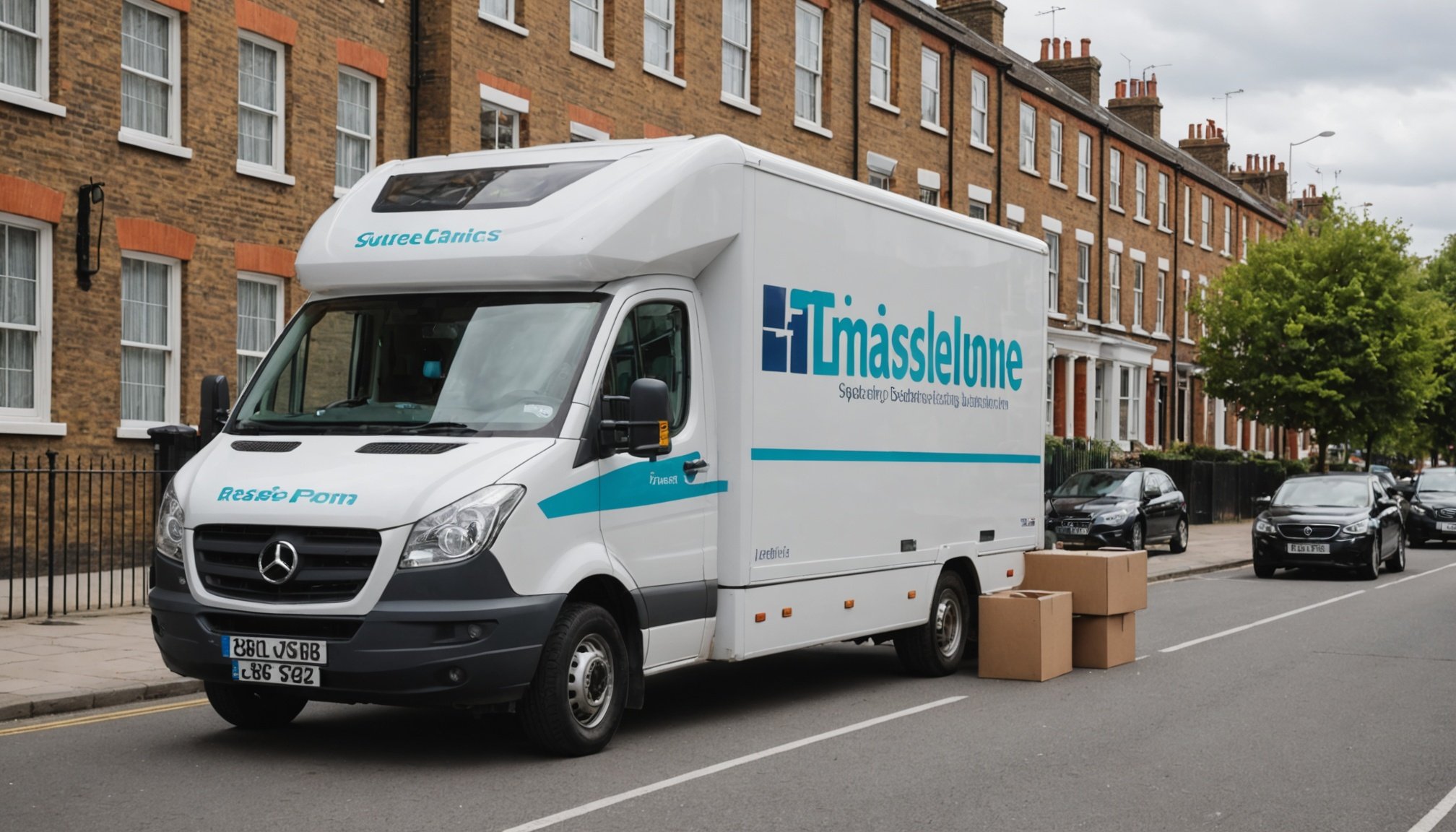Understanding the Moving Process in London
Moving homes in the bustling city of London can be a challenging chapter, yet with the right approach, it can unfold seamlessly. Central to the relocation process is structuring a comprehensive moving procedure, which is composed of three main stages: planning, execution, and settling in.
In the planning stage, crafting a detailed timeline is crucial. It acts as the backbone of the entire house move in London, ensuring you stay on track. Allocate ample time to declutter, pack, and handle all administrative tasks, such as notifying relevant authorities of your address change. Researching moving companies early on is wise to secure the best deal.
Also read : Streamline your niss application process with online ease
During execution, focus on the logistics: managing the movers, ensuring the safe transport of valuables, and overseeing the efficient loading and unloading of items. Despite the pressure of moving day, maintaining calm and having a plan for unexpected hiccups ensures smoother proceedings.
Finally, the settling-in phase is about transitioning into your new environment. Unpack methodically and take your time to arrange your living spaces. It’s equally important to familiarize yourself with the local amenities and neighbourhood.
Additional reading : Complete Guide to Updating Your Vehicle Registration After Relocating in the UK
Avoid common pitfalls by not hurriedly packing without a system and underestimating the time needed for each stage. A carefully crafted plan prevents unnecessary stress and lays a strong foundation for your new beginning.
Creating a Comprehensive Moving Timeline
A moving checklist is an essential tool for ensuring a smooth relocation. It provides a clear timeline for moving, helping you stay organized and on track.
Pre-Move Organization
Start by establishing a moving date to anchor all subsequent tasks. With a fixed date, you can efficiently navigate the complexities of relocating. Next, consider researching local areas and neighborhoods if you’re moving to a new location. This research aids in understanding your new environment and making informed decisions.
Budgeting for your move is another critical step. Moving can be expensive, so setting a clear budget helps prevent financial surprises.
One Month Before the Move
As the date approaches, focus on gathering necessary documentation such as leases, contracts, and identification, which is crucial for a seamless transition. Decide whether to hire professional movers or opt for DIY solutions. Each option has its merits, from convenience to cost-effectiveness. Lastly, plan for packing supplies to avoid last-minute scrambles for boxes or tape.
One Week Before the Move
Confirm arrangements with movers to ensure mutual understanding and expectations. Don’t forget to inform utilities and essential services of your relocation. Devising final packing strategies can mitigate stress, ensuring everything is ready for moving day.
Packing Strategies for a Move in London
When facing a move, especially in a bustling city like London, packing tips are invaluable. Start by organizing items and decluttering. This doesn’t just lighten the load, but ensures you’re only transporting essentials. Go through each room, decide what to keep, and donate or discard the rest. Consider creating categories for items to streamline this process.
To achieve organization while packing, gather all necessary packing supplies beforehand. Boxes, packing tape, bubble wrap, markers, and labels are crucial. Once you have everything, begin packing room by room—this keeps things orderly and prevents chaos upon arrival at your new destination.
Handling fragile items requires special attention. Use plenty of bubble wrap or soft materials to cushion these pieces. Nest them in sturdy boxes, and make sure they’re snugly fit to avoid movement during transit. It’s smart to pack them separately from heavy items to prevent damage.
Labeling each box appropriately is a game-changer, making unpacking a smoother process. Clearly write the contents and designated room on the labels. Using colour codes can also be helpful; for instance, kitchen items could have green labels, while bedroom items use blue. This systematic approach saves time and stress when settling into your new London home.
Hiring Movers and Handling Logistics
Moving homes can be daunting, especially when dealing with the vibrant traffic and busy streets of London. When hiring movers, there’s a lot to consider to ensure a smooth transition.
Finding Reliable Movers
Before deciding on moving services in London, research and compare different companies. Pay attention to reviews and references to gauge their reliability. When hiring movers, it’s crucial to understand the contract you’re entering. Look for clear terms — discussing any potential extra fees and cancellation policies is advisable.
Navigating London’s Traffic
Planning your routes is critical when moving in London. Aim for optimal times to avoid peak traffic. Checking parking regulations in your new area is also important to avoid fines. It’s wise to have contingency plans in case of unforeseen delays.
Insurance and Liability
Understanding the importance of moving insurance is vital. Insurance can protect your belongings during the move. Several coverage types are available, from full value protection to basic liability. Evaluating the worth of your possessions will help in choosing the right insurance. This ensures peace of mind, knowing you’re covered if any mishaps occur during the move.
Settling Into Your New Home
Moving to a new place is both exciting and daunting. The first few steps post-move can make all the difference. Begin by unpacking essentials; focus on rooms like the bedroom and kitchen to swiftly gain comfort. This process is crucial for easing the transition into your new environment.
Once you’re somewhat settled, turn your attention to the neighbourhood. Grasping key neighborhood insights can dramatically improve your experience. Take time to walk around and identify local amenities like grocery stores, parks, and clinics. This not only helps in settling down but also gives you a sense of belonging.
Engaging with local community resources is another valuable step in settling down. Attend community events or join social groups to meet residents and build connections. This is an excellent way to feel part of your new community and gather firsthand information and tips about your new locale.
Additionally, employ moving in tips such as creating a list of contacts like the utility companies and nearby service providers. These steps will aid in making your new house feel like home faster and facilitate a smooth adjustment process.
Challenges Unique to Moving in London
Moving within a metropolis like London comes with its own set of hurdles that new residents might not anticipate. These relocation obstacles stem mainly from the city’s distinct setting and lifestyle demands. Navigating this urban landscape successfully requires understanding and preparation.
Dealing with Space Constraints
London’s housing often requires adapting to smaller living spaces. Embrace multi-functional furniture and be creative with vertical storage solutions. Think mezzanine beds and stackable units! Efficient furniture arrangement is also pivotal — choose compact or foldable items to maximise space while maintaining comfort.
Navigating Local Regulations
Understanding property management rules is essential. London properties may have specific guidelines regarding renovations or decorations. Waste disposal policies also differ by borough, requiring familiarisation to ensure compliance with recycling and rubbish collection procedures. Finally, make sure to adhere to London-based moving regulations, which may include timing restrictions or permits for larger vehicles.
Emotional Transition and Adjustment
The emotional upheaval of relocation can be significant. Managing stress involves establishing a support network of friends and local groups. Transitioning emotionally is smoother when newcomers take time to acclimate through engagement with community activities or local events. There are countless resources available to help you settle and thrive in urban London.











